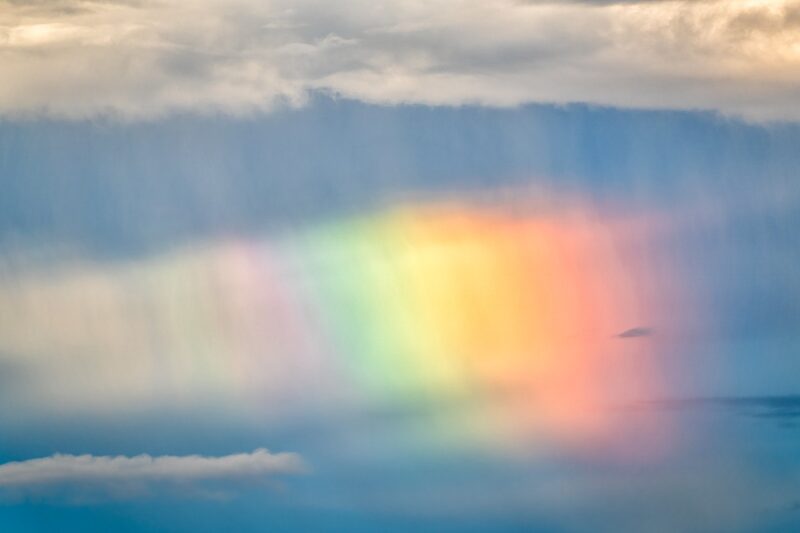What Causes a Rainbow? Understanding Light and Refraction
November 16, 2024

Rainbows have captivated humanity for centuries, often seen as symbols of hope and beauty. But what exactly causes this stunning natural phenomenon? Understanding the science behind rainbows reveals fascinating insights about light, water, and the atmosphere.
1. The Basics of Light
Light is a form of electromagnetic radiation that is visible to the human eye. It travels in waves and has properties of both particles and waves—a concept known as wave-particle duality. Light consists of various wavelengths, each corresponding to different colors. The visible spectrum of light includes red, orange, yellow, green, blue, indigo, and violet, often remembered by the acronym ROYGBIV.
When light passes through different mediums, it changes speed, which can cause various optical phenomena. Understanding this principle is crucial to grasping how rainbows are formed.
2. Refraction: The Key to Rainbows
Refraction is the bending of light as it passes from one medium to another. When light travels from air (a less dense medium) into water (a denser medium), it slows down and bends. This bending is what creates a rainbow.
Rainbows form when sunlight encounters raindrops suspended in the atmosphere. Here’s how it happens:
- Entry into the Raindrop: As light enters the raindrop, it slows down and bends due to refraction. This initial bending separates white light into its component colors.
- Reflection Inside the Raindrop: The light reflects off the inside surface of the raindrop, traveling back towards the front of the drop. This reflection causes the colors to spread out more distinctly.
- Exiting the Raindrop: As the light exits the raindrop, it bends again due to refraction, further enhancing the separation of colors. Each color exits at a different angle, creating the arc of the rainbow we observe.
The angle at which the different colors exit the raindrop is what allows us to see a spectrum. Typically, red light exits at an angle of 42 degrees relative to the original direction of sunlight, while violet light exits at approximately 40 degrees.
3. The Role of Sunlight and Water
For a rainbow to form, specific conditions must be met:
- Position of the Sun: The sun must be shining and positioned behind the observer, typically lowered in the sky around sunrise or sunset. This positioning allows sunlight to enter raindrops in front of the observer.
- Presence of Moisture: Rain showers or mist are necessary to provide the water droplets needed for the refraction and reflection process. Even spray from waterfalls or garden hoses can create rainbows under the right conditions.
When these factors align, a beautiful arc of colors emerges, delighting those fortunate to see it.
4. Double Rainbows: A Unique Phenomenon
Occasionally, two rainbows can be seen simultaneously. This phenomenon, known as a double rainbow, occurs when light is reflected twice inside the raindrops before exiting. The result is:
- Primary Rainbow: The brighter and more vibrant rainbow that follows the typical order of colors (red on the outer edge and violet on the inner edge).
- Secondary Rainbow: A fainter rainbow that appears outside the primary one, with colors in reverse order (red on the inner edge and violet on the outer edge).
The existence of a secondary rainbow occurs because light reflecting a second time loses some of its intensity and changes the order of colors, creating a beautiful yet fleeting spectacle.
5. Cultural Significance of Rainbows
Throughout history, rainbows have held symbolic meanings across various cultures. They are often seen as bridges between heaven and earth or as harbingers of hope after storms. Some cultural associations include:
- In Mythology: Many myths feature rainbows as paths for gods or spirits, such as the Norse god Loki in Viking lore, or the Irish legend of a pot of gold at the end of the rainbow.
- In Art: Artists throughout history have used rainbows as symbols of beauty and diversity, seen in works from the Renaissance to modern art.
- In Science and Education: Rainbows serve as excellent educational tools to teach concepts of optics, light behavior, and the electromagnetic spectrum, making science accessible and engaging for all ages.
As we continue to explore the beauty and science of rainbows, they remain a source of inspiration and fascination.
Conclusion
Rainbows are more than just beautiful arcs of color in the sky; they are a testament to the wonders of light and nature. By understanding the principles of refraction, reflection, and the conditions that create rainbows, we gain a greater appreciation for the science that surrounds us. The next time you spot a rainbow, remember the intricate dance of light and water that brought it to life, and cherish the joy and wonder it inspires in all of us.







